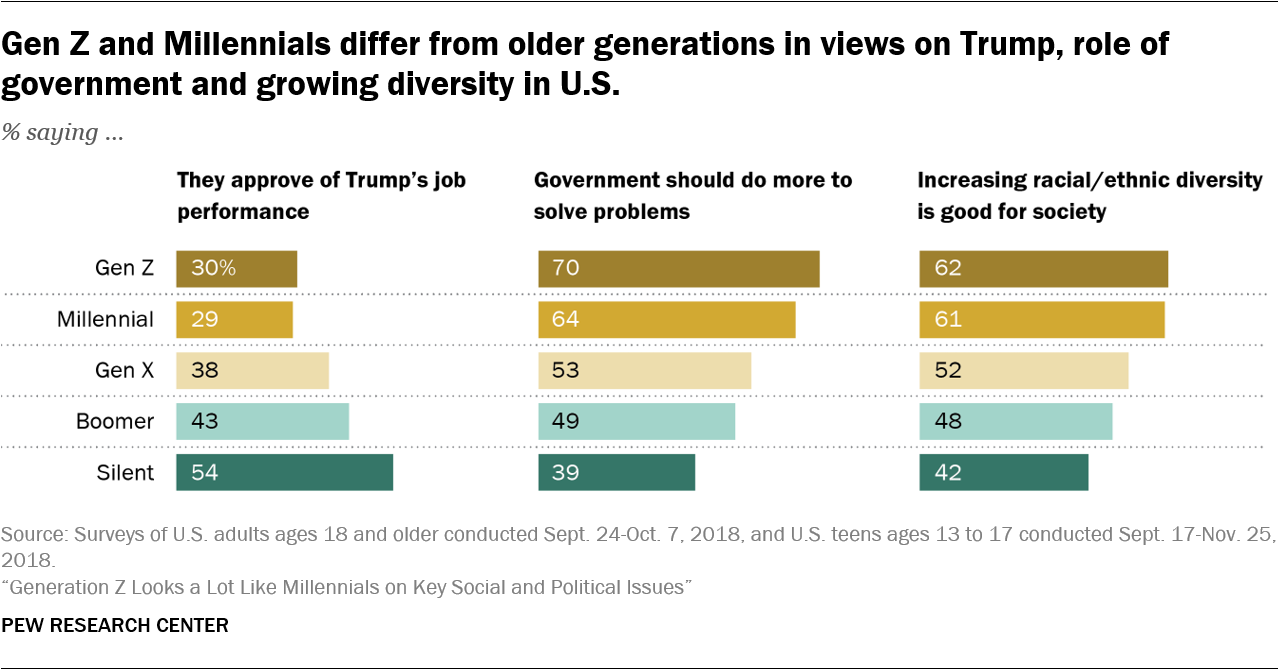Coronavirus presents us with the chance to rise to a challenge and be our best selves by doing good for others. For a brand, this is an opportunity to improve perception and engagement, particularly on social media. And it may be a particularly effective way to reach Gen Z!
Gen Z will represent 40% of global consumers in 2020 according to Vogue Business. At the same time, Business Insider reported that Gen Z’s usage of Facebook, Instagram, and Twitter is down 30%, 21%, and 20.3% respectively. Given how progressive Gen Z is, doing good is a great way to connect (or re-connect)!
Why do something good?
In December of 2019, HootSuite forecast that one of the biggest trends of 2020 would be companies taking active steps to improve the lives of others. And for good reason: mission-oriented companies grow three times faster than their competitors. In fact, Fast Company found that 20% of potential employees were more likely to want to work for a business whose CEO espoused humanistic political positions.
Following through with treating your employees well pays off. As highlighted by Jon Clark, managing partner and chief SEO at Moving Traffic Media, investing in your staff inspires your staff to invest in you. This may include promotions, continued education, and going above and beyond in terms of employee health and wellness.
What should you do?
As found by the Pew Research Center, Gen Z is as progressive as Millenials, so doing something good is likely to resonate. According to HootSuite, “Community impact, talent development, and diversity, and inclusion,” are the values that should guide your company. Your business may perform direct charitable action, institute a matching gifts program (that’s where you match employees’ charitable donations), and/or remedy issues within your company itself, like when Citibank committed to correcting the gender pay gap amongst its own employees.

How do you make your announcement?
Announce your action only after you’ve taken it rather than before. Otherwise the announcement will be seen as inauthentic. This is especially important since, as noted by Fast Company, such announcements raise the expectation that employees and stakeholders will be treated fairly and with respect. People will be able to very quickly see what steps your company has actually taken just by talking with people who work for you. This is also a good reason for making your action affect your employees themselves if you’re a large enough company: you have more control over your company than you do over outside populations.
Use video to make your announcement.
Moving Traffic Media has already highlighted that one of the most essential skills a social media manager should know is how to deploy video effectively. In fact, it’s been found by Twitter that Tweets with video get 10X more engagement. And since Vogue Business notes that roughly 89% of Gen Z both have and or visit YouTube, video is the way to go to capture the attention of this coveted demographic.
It’s also important to note that for Gen Z, and many others, Tweets are often encountered as screenshots on Facebook and, even more so, on Instagram. Video allows you to get around this predicament. Additionally, as Moving Traffic Media discussed in a recent post about dark social, Gen Z often turns to social media for entertainment more so than for news, self expression, and communication. So, if your announcement is entertaining and/or offers an opportunity to participate, you can further improve your reach.
Give your audience the chance to participate.
As highlighted by HootSuite, a great example of a company doing good and giving others the chance to participate was when Nike partnered with TikTok influencers in Italy to encourage women in sports. Nike not only pushed for a positive goal, but they also gave their target audience a chance to participate by challenging women and girls to recreate choreographed sports routines on the app. The promotion was a huge success! So, if you can create an avenue for others to participate, even if it’s just with hashtags, you can extend your reach.
How do you tell if your campaign is going well?
Doing good is its own reward, but since this positive action is also part of a campaign you’ll want to monitor the effects directly. This is the sort of rollout where “vanity” metrics (likes, comments, and shares) are likely to show you how you’re doing right away since people should respond positively to good news pretty quickly!
Make SMART goals.
As always, fall back on making SMART goals–goals that are specific, measurable, attainable, relevant, and timely. Some metrics you may use include:
- Reach
- Audience engagement
- Site traffic
- Leads generated
- Sign-ups and conversions
- Revenue generated
Calculate return on investment (ROI).
The return on investment formula you use will depend on the goals that you’re trying to achieve. That may include:
- Simple ROI: (Total revenue – Marketing Investment)/ Marketing Investment x 100
- ROI with Cost of Goods sold (COGS): (Total revenue- Total COGS – Marketing Investment) / Marketing Investment x 100
- Year-Over- Year Growth Rate: (Total Goal Completions/Total Visits by Target Market) x 100
- Basic Conversion Rate: (Total Goal Completions/ Total Visits) x 100
- True Conversion Rate: (Total Goal Completions/ Total Visits by Target Market) X 100
The added benefit of a campaign based around doing good is that you reap the reward no matter the outcome. If you benefit your employees or neighboring community, for example, your company benefits as well.
Should you have an emergency plan?
If you’re wondering how it could possibly be that doing good can court controversy, look no further than Gillette’s” The Best Men Can Be” campaign. Parent company Procter & Gamble’s intention was to highlight negative behavior among men, like bullying and sexism, and to contribute to alleviating these ills with a three-year commitment to making relevant charitable donations.
The campaign was started with the release of a digital short-film called, We Believe: The Best Men Can Be. While some people praised the film, negative criticism ended up overshadowing the effort. And while we may have the campaign to thank for the popular meme format, “Bro! Not cool”, the campaign seemingly failed to achieve its ends.

How could Procter & Gamble have better approached this topic? They already did, by highlighting the company’s success in closing the gender pay gap and in approaching gender parity in management positions.
Since you should always have a contingency plan, here’s some advice from HootSuite on what that should entail:
- Use social listening to monitor social sentiment.
- Map out what qualifies as a bad situation.
- If things go sour, immediately stop all scheduled posts.
- Over 25% of crises go international within an hour, but companies take an average of 21 hours to take meaningful action. Have something flexible prepared in advance.
- Engage the conversation but don’t argue.
- Get on the same page internally.
- Learn from the experience.
Bottom line
Doing good is its own reward, and there’s no better time than a pandemic to do some good! It’ll make your company a better place to work, improve how people see your brand, and may even encourage people to work with your business.
Since social media is going to be one of the primary ways you’ll announce your action, it can be an opportunity to engage or re-engage with your audience, and even expand your reach. So long as you take a smart approach with SMART goals, doing good should help others and help you too!





